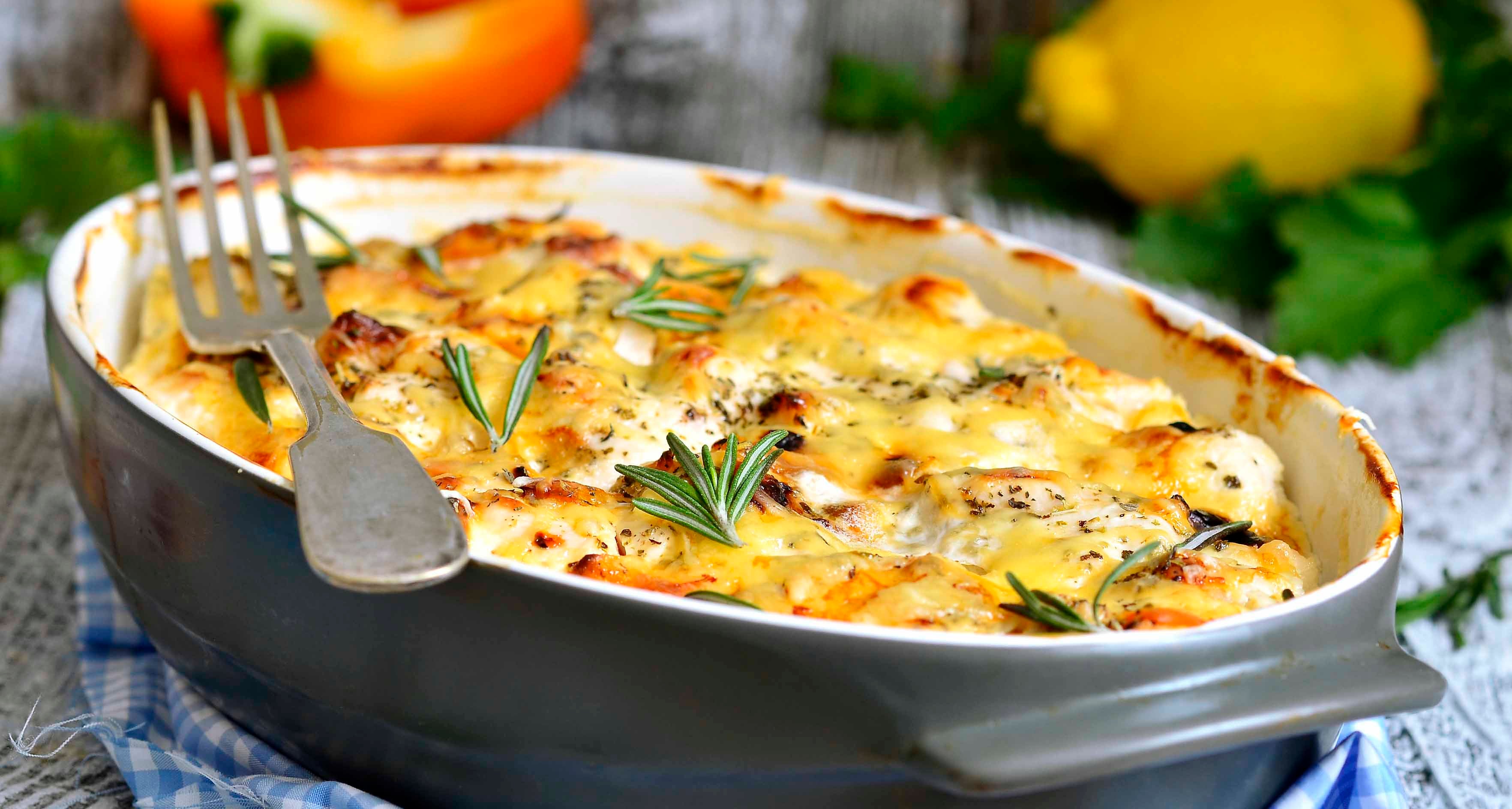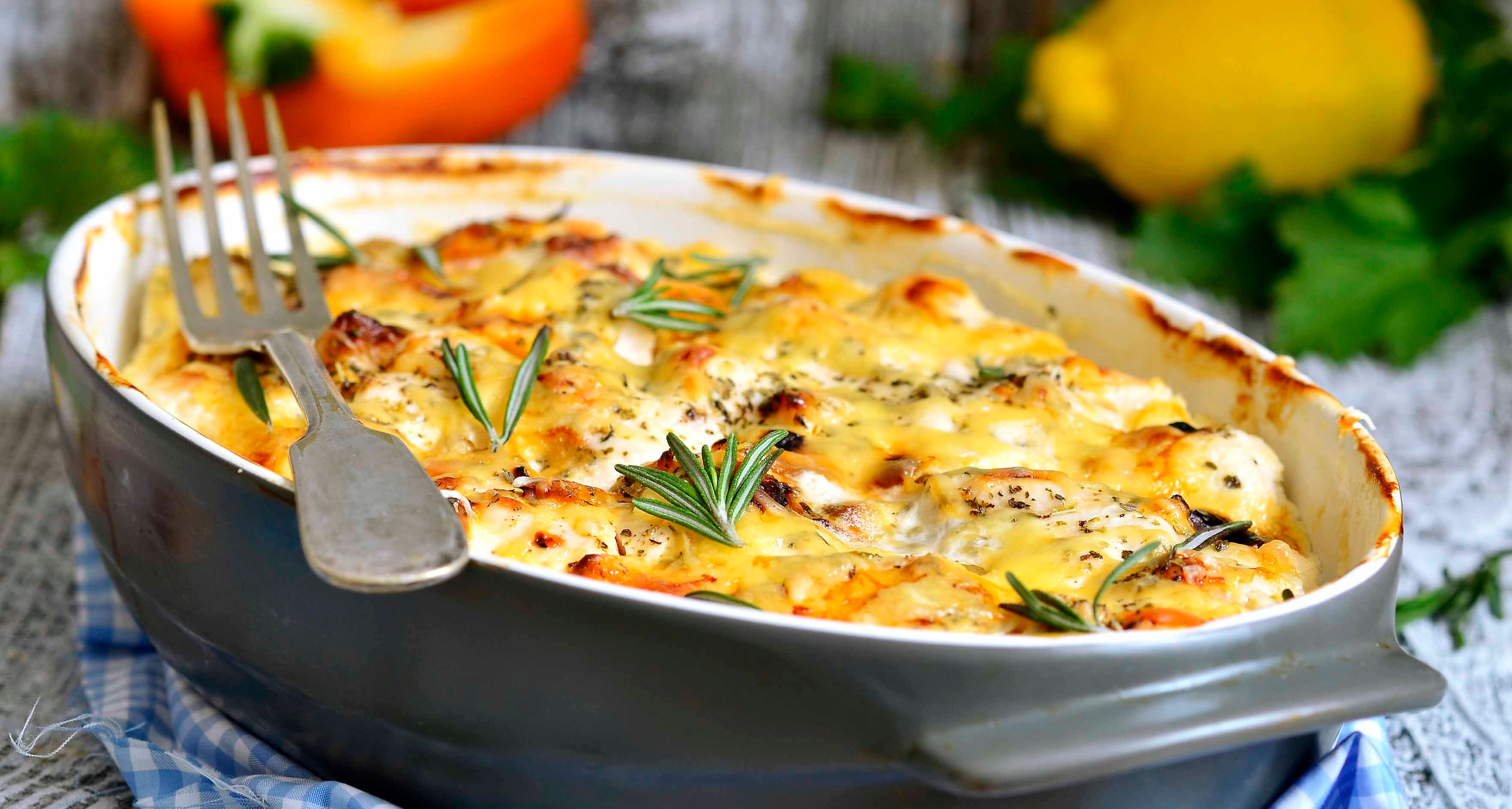Casseroles: from classic to contemporary


Gone are the days when making a casserole meant combining noodles, canned soup, and some kind of mystery meat in a pan before baking for an hour. Today’s casseroles are delicious and full of bright and bold flavours that can be customized in countless ways each time you’re in the mood for a casserole. Perfect for advanced meal prep and freezer dinners, it’s no wonder casseroles are making a comeback!
What exactly is a casserole?
Opinions on what makes a casserole a casserole vary depending on who you ask, but in general terms a casserole is a combination of ingredients that are baked in one dish (such as a casserole dish or Dutch oven) until piping hot and ready to eat. Casseroles are often thought of as comfort food and usually contain either some sort of grain (such as rice or quinoa) or noodles (anything from egg noodles to pasta shapes), which are covered in a sauce, and finished with a topping (such as breadcrumbs or grated cheese), depending on the recipe, casseroles may or may not contain meat or extra vegetables. From the United Kingdom’s shepherd’s pie to Mexico’s enchiladas, and Italy’s lasagna it’s clear that casseroles are popular in cuisines all over the world.
Make ahead and freeze for later
Casseroles make fabulous make-ahead meals that can be stored in the fridge for tomorrow night’s dinner or frozen for a cold and dreary weeknight a couple of months from now. If you make a lot of casseroles to freeze at once, it’s helpful to order reusable foil baking pans with cardboard lids from a paper or restaurant supply store (you can also buy small foil containers for single or double servings). Not only will this save you precious freezer space, but the cardboard gives you plenty of room to date and label the casserole and write out reheating instructions for whenever you decide to bake it in the future. Freezing instructions for casseroles vary depending on the type of recipe used and the moisture content, some casseroles can even be par-baked before freezing to shorten their cooking time.
Make your casserole a healthy choice
Although there’s nothing wrong with enjoying a rich casserole made with high-fat ingredients once in a while, there are many healthy substitutions that can be made in the casseroles you eat on a regular basis. If a casserole recipe calls for ground meat, you can substitute half the quantity called for with cooked lentils, beans or textured vegetable protein. Greek yogourt makes a great substitute for sour cream in creamy casseroles, as does well-blended silken tofu. Steamed and puréed cauliflower, butternut squash, and carrots can also be added to cheese-heavy cream sauces in casseroles such as macaroni and cheese. These vegetables blend in so well that most people can’t taste a difference. If a casserole calls for a mashed potato topping, they can be partially or completely replaced with vitamin A-rich yams or sweet potatoes.
Quick casserole facts
- The first green bean casserole was made in New Hampshire in 1866 by Elmore Jolicoeur.
- Shepherd’s pie is technically always made with lamb or mutton, while cottage pie is made with beef.
- The first written recipe for macaroni and cheese dates all the way back to 1770 where it appeared in Elizabeth Raffald’s book The Experienced English Housekeeper.
- The current world record holder for largest lasagna belongs to Magillo Restaurant in Wieliczka, Poland, weighing in at 4,865 kg and spanning an area of 25 metres by 2.5 metres.